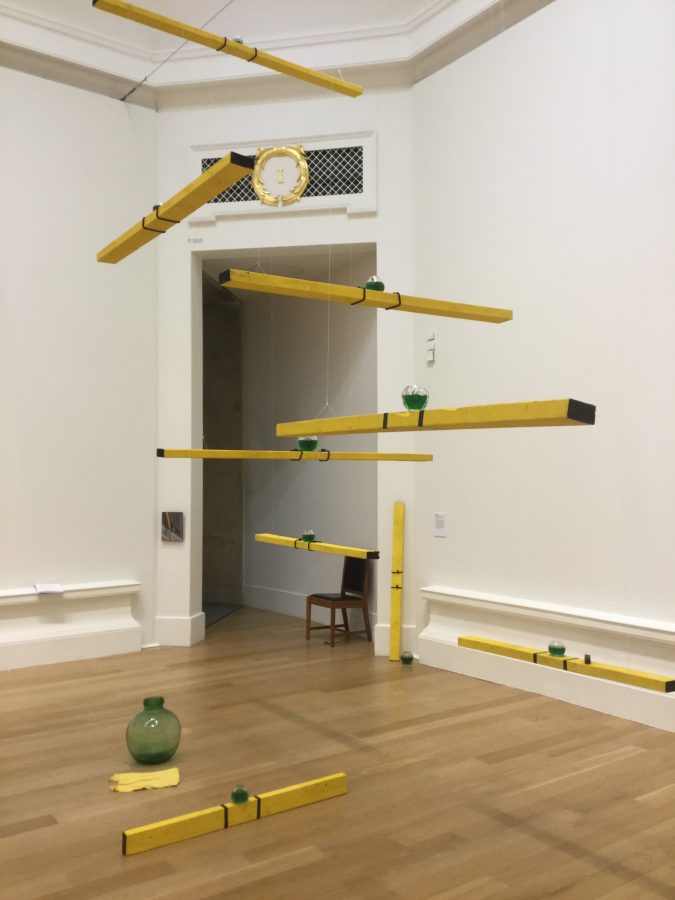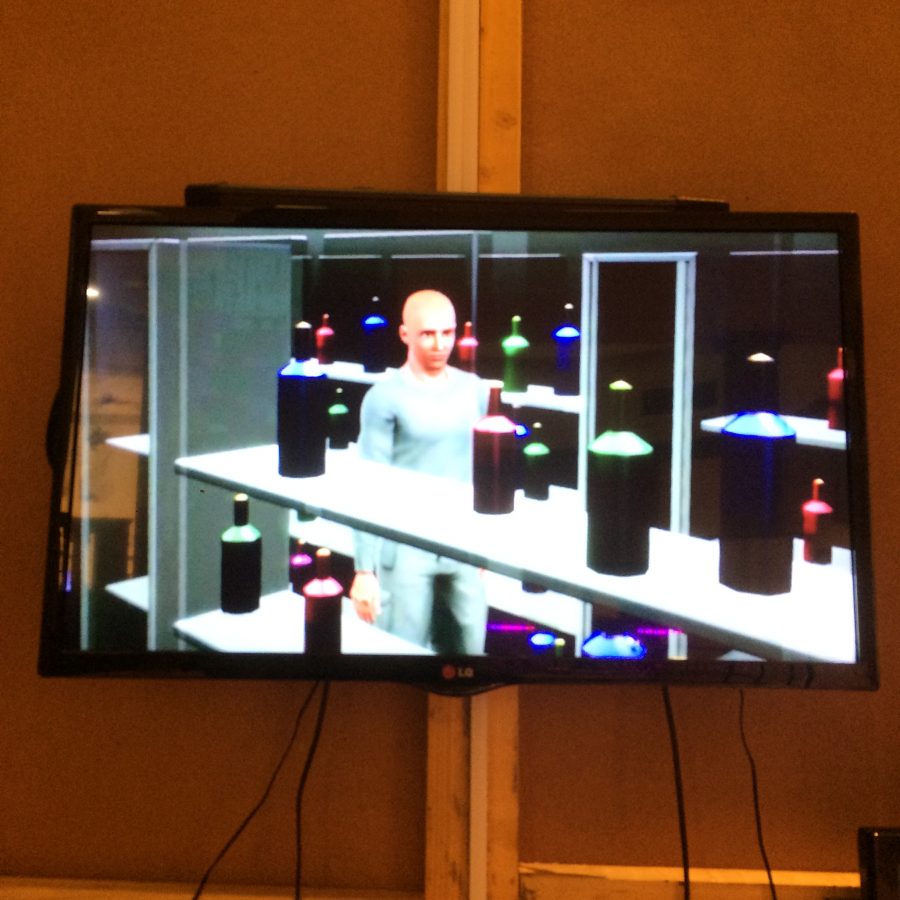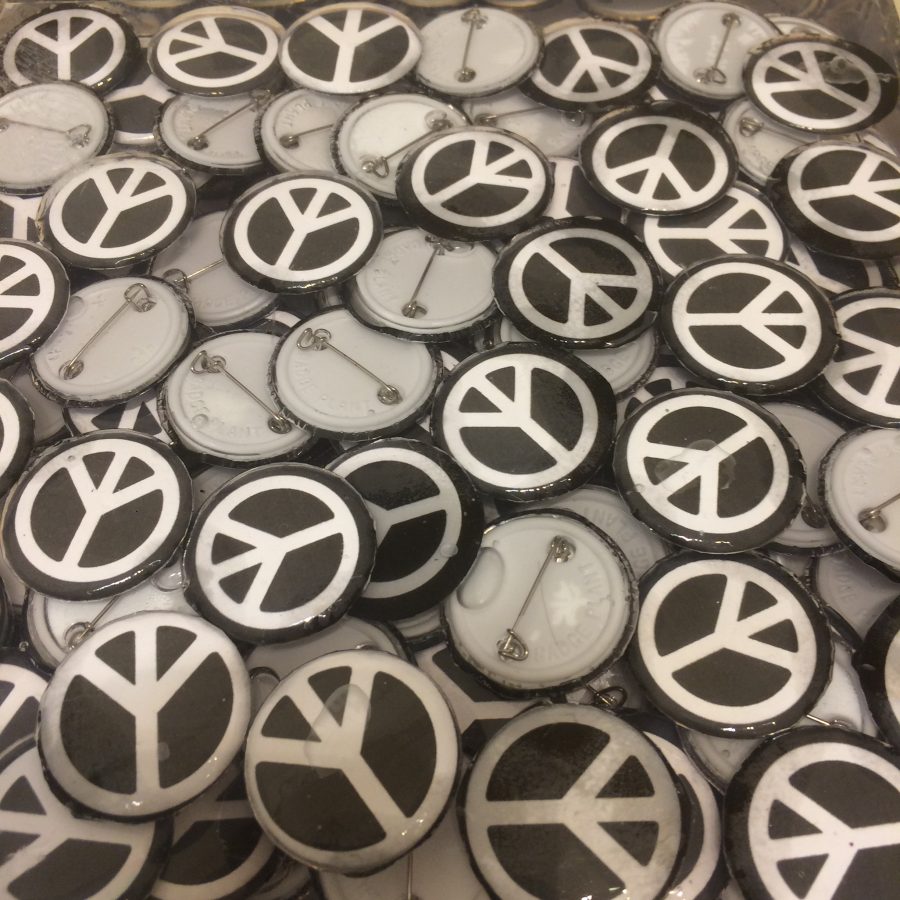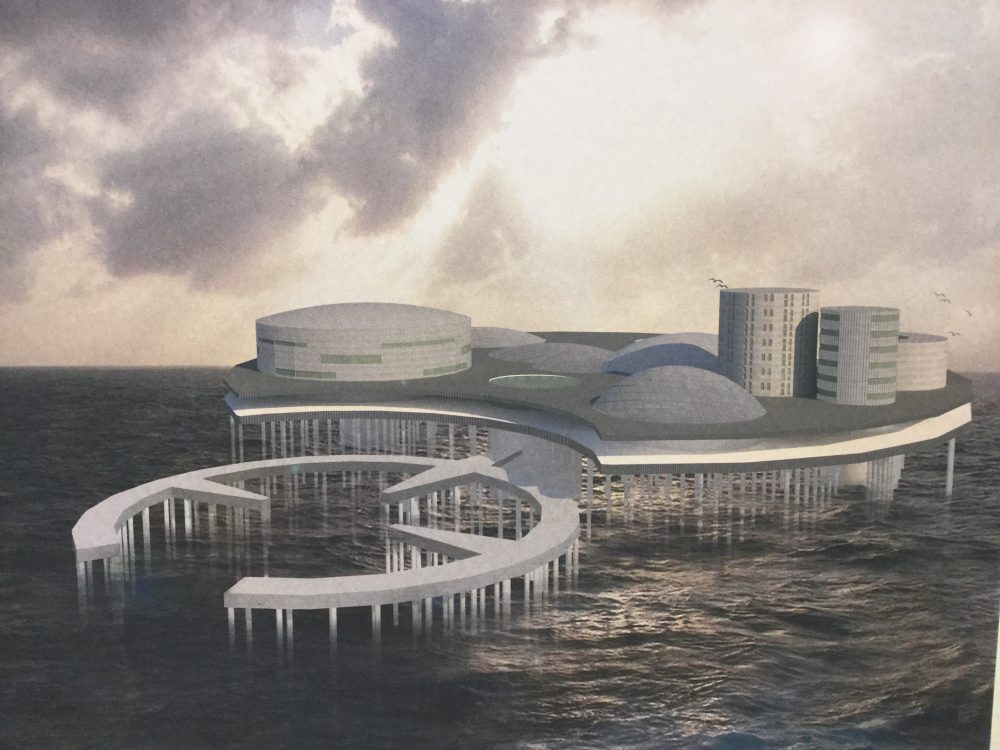At the Royal Scottish Academy: New Contemporaries 2020
Sometimes one theme dominates New Contemporaries, the Royal Scottish Academy’s annual selection of the best work from Scottish art schools’ graduate shows. This year, however, many issues are addressed, from very personal meditations on love and family to broader statements about nature, climate change and commodification. It’s a variety that makes for an engaging and thought-provoking show.

Katherine Fay Allan’s installation The rest of us… we just go gardening is a life-size hospital bed filled with plants, many of them medicinal. Inspired by her experience of her mother’s illness and death, Allan also considers the similarities between surgery and gardening, and the different meanings of growth. Partially hidden underneath the greenery is a white model of a body; it is fractured and punctured. She describes ‘the surreal experience of treatment’ – something that one feels as soon as one enters a hospital, even as a visitor. As a patient one must feel increasingly divorced from reality and the outside world.

Still looking at the body, but in a much more visceral way, Emma Hislop’s Ecologus presents us with a quasi-scientific apparatus of bottles and tubes through which liquid drips above a murky brown, polluted, pool. The viewer experiences a profound feeling of unease/disease; there is a sense of decay and rot, science and myth. In this disturbing work Hislop contemplates a possible correlation between ecological decline and the rise in chronic gut disease.

Our precarious and often destructive relationship with the natural world is addressed again in Hannah Crooks’ beautiful photographs of flowers. In the series Patched Up, Removed, Dissolved, Mutilated, Bound and Flattened she juxtaposes stunning images, often reminiscent of Georgia O’Keefe’s paintings, with black and white photos of the same flowers mutilated and damaged, one by rough stitches from a needle, another imprisoned in a wedding ring. O’Keefe denied that her pictures had sexual connotations, but here the connections with genital mutilation, and the enslavery of child marriage, are intended. I especially like the way in which these works combine such artistic skill with such shocking messages – in fact they are the more powerful because the unspoilt images are so exuberantly beautiful.
-

Ruby Pluhar -

Ruby Pluhar
In contrast to the exhibits that point up our destructive attempts to own, subdue and commodify nature, Ruby Pluhar’s photographs of her friend Ella in wild Scottish landscapes convey a feeling of oneness with the world. Ella is seen, her glorious red curls flying in the wind, against a backdrop of Glencoe, or floating in a stream, the turquoise of her camisole reflected in the shallow blue-green water. In another image she appears to fall through green space (the photo having presumably been taken upside down, with Ella lying over a huge brown rock.) Pluhar also shows some spectacular photos of the landscape itself; the closely observed textures and colours of rock pools, seaweed strewn rocks, sea anemones. In another picture a ribbon of road runs alongside the vast yellow-brown mountains; dark rocks tower above, the river flows beneath.

Sam Renson’s blue and white oil paintings give a more impressionistic, abstract view of nature, inspired by walks taken in the countryside. She describes them as part of the ‘inscape’, the personal experience. One painting resembles water droplets splashing, another brings to mind a vertebra with bright light at its centre.

We are living in an age of anxiety. Edith Hicks’ installation The Living Procedure: in a New Arcminute cleverly examines what she calls ‘the conscious precarity in the built environment.’ Planks of wood are suspended from the ceiling at different levels; on top of them are spirit levels, but none is completely level, everything moves and tilts. Our attempts to control our environment, and our lives, can never work, but, perhaps unlike previous generations, we believe we should be able to order everything, and that if we do we will be at peace. Our inability to achieve this leaves us strung out, uneasy and often terrified.

Panic buying and the hoarding of groceries is very much on topic just now. Again we try to mitigate the fear of the unknown, the ‘what ifs?’ to which we cannot know the answer. Gabrielle Gillott’s Reading Room, Hidey Hole and Secret Room videos seek to explore ‘the exploitative commodifying of ‘off the grid’ prepping and other fundamental contradictions of such pursuits’. In one a man stands surrounded by shelves containing numerous bottles, in another a woman sits in a room lined with bookcases. The highly stylised images emphasise the uniformity of something that is supposed to be ‘different’ and ‘independent’; they are full of an unspoken tension.

Cal McCutcheon’s strange paintings and video show us primitive symbols and unsettling images. A rat is shown split in two, but still very much alive, devils abound, a skeleton is controlled like a puppet on a string. Weird little animals ‘run far with little legs into unsuspecting heads.’ McCutcheon’s Schism and Skinwalkers’ Paradise combine macabre, nightmarish ideas with real technical skill; these paintings perhaps recall John Bellany’s wilder excursions into the world of the imagination. McCutcheon is inspired by the work of pioneer American publicist Edward Bernays.

Two artists look at different aspects of family life. Alison Campbell Glass examines social and political themes in Scottish working class history through the lens of her own grandparents’ lives. A photograph of her grandfather shows him sitting in an armchair beside a 1960s formica-topped table; he wears slippers, smokes his pipe, and has an air of distance, determination. maybe even slight suspicion. Glass has re-upholstered that very chair, which now forms part of the installation (George’s Chair); a film of her working on it is accompanied by a recording of her reading George’s memories of being a prisoner of war – which include having to dig latrines every day. Glass also shows an iconic item of 1960s activism; a box of Anti-Nuclear Campaign badges.

Erica Paterson records the lives of her father’s parents in a series of small framed illustrations; the significance of many of the images can only truly be known to the family – but as she rightly points out, there is a ‘mystery and wonder’ in seeing glimpses of a’ legacy that is not your own.’ The viewer finds herself guessing what might be the meaning of a telephone left off the hook, a person upside down in a haystack (feet sticking out at the top) or two silhouetted hands reaching towards a sign bearing the enigmatic initials ‘DIP’.

One room of New Contemporaries is dedicated to architecture; of particular interest there is Sarah Broadhurst’s project Inform and Delight, which proposes a ‘Mini Orkney’ – a visitor attraction in which cruise ship passengers could explore all of the historic areas of the islands, reproduced in one place, without actually visiting the real ones. The aim is to reduce the impact of tourism on delicate ancient sites, maintain the essential flow of tourist income to the islands, yet still offer the visitors a ‘real’ experience. I have no idea if this would work in practice – would people be satisfied with this pretend Orkney, and if they were, why would it need to be in Orkney at all? But it is a fascinating idea, and may be the only way forward for some of our most popular, and most vulnerable, places.
Saving the best till last, Alex Hayward’s film The Boy that I Love is Waiting in the Wings combines clips from ballets with film, cartoon and newsreel to illustrate the story of Hayward’s own response to Matthew Bourne’s Cinderella, the first ballet he ever saw. Accompanied by Hayward’s wistful drawings and paintings, also inspired by the ballet, the film begins with Hayward folding bags in a stylised Disney-esque supermarket, then sees him trapped in a cage, before it moves on to his immediate reactions to the performance as it happens;
‘It’s like when people are quiet in the audience but in the ballet the quiet is on the stage as well. There’s only the music.’
Hayward finds himself falling in love with Malcolm, one of the characters in the story, and even messaging the dancer, Jackson Fisch. He sometimes struggles to stop himself blurring the line between fact and fantasy for, as he wryly observes, ‘Perhaps the most important thing about Malcolm is that he isn’t real.’ It’s a touching, poignant story, shot through with romantic longing and ultimate disappointment. In real life, however, Hayward’s story did have a happy ending, in that Matthew Bourne heard about his work and has now asked him to make a new piece in response to Bourne’s production of The Red Shoes.
New Contemporaries 2020 is an inspirational testament to the creativity and skill of emerging Scottish artists. The future is in good hands.
RSA New Contemporaries is at the Royal Scottish Academy on the Mound until 11 March 2020 (12-5pm Sunday, 10am-5pm weekdays.) Admission £6/£4 – free on Mondays.